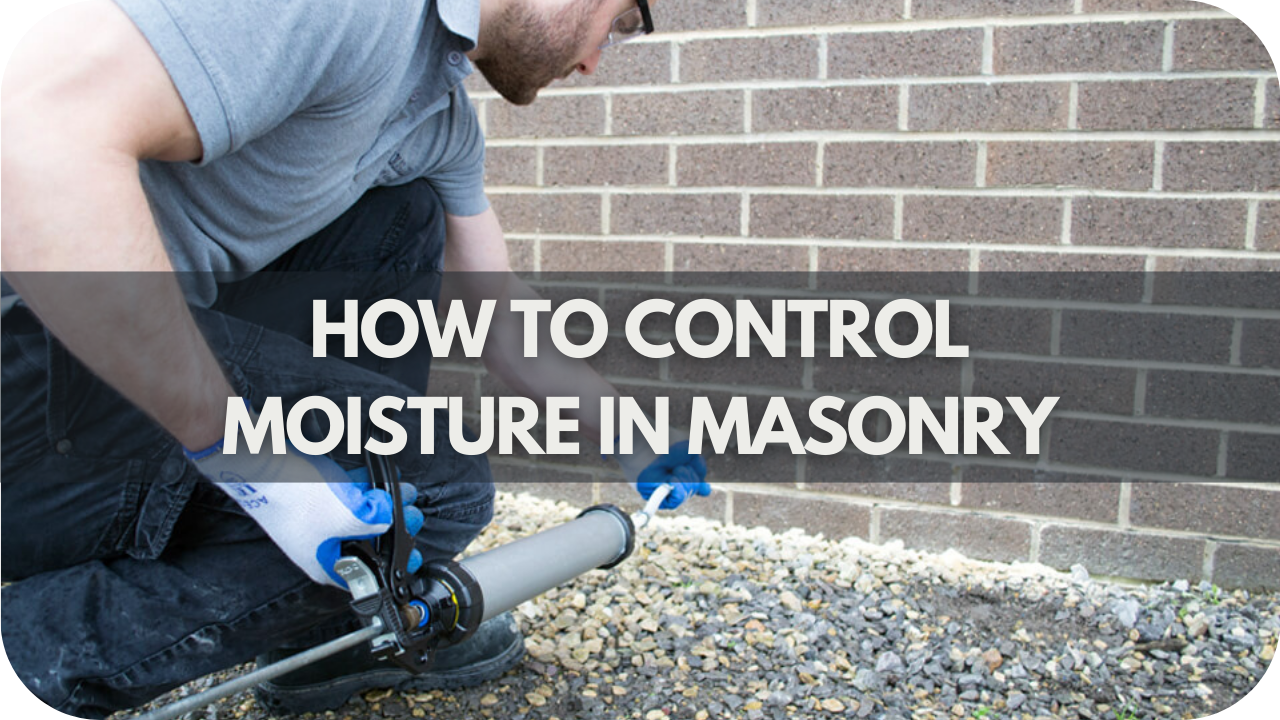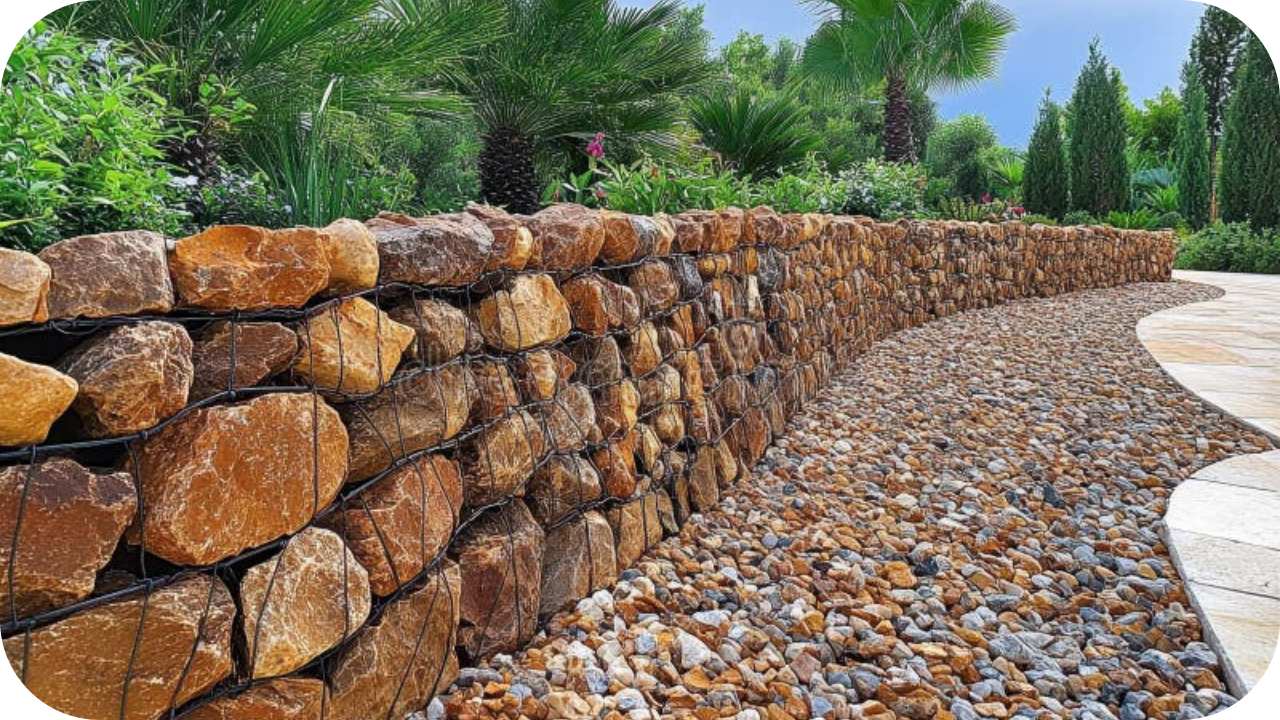
Excess moisture wreaks havoc on masonry structures, leading to deterioration and costly repairs. Without proper control, dampness seeps in, causing unsightly stains, mould growth, and structural instability.
Learn practical strategies and solutions to combat moisture infiltration, safeguarding your masonry against damage and ensuring its longevity.
1. Identifying Moisture Problems
Accurately identifying moisture problems in masonry is paramount to implementing effective solutions. Signs of moisture issues include stains, discolouration, peeling paint, or mould growth on interior or exterior surfaces.
Efflorescence, a white powdery substance, often indicates moisture migration within the masonry.
Visual inspection should be complemented by moisture testing, using tools like moisture meters or infrared cameras to detect hidden moisture. Pay attention to damp or musty odours and warped or deteriorating materials, which indicate long-standing moisture problems.
Furthermore, monitor areas prone to moisture infiltration, such as basements, crawl spaces, and windows and doors. Address any cracks or gaps in masonry joints or seals promptly to prevent water ingress.
Regular maintenance and vigilant observation are essential for early detection and mitigation of moisture issues.
2. Preventative Design and Construction Techniques
Preventative design and construction techniques are essential for controlling moisture in masonry structures.
Proper site grading directs surface water away from the building, preventing moisture ingress. Vapour barriers used during construction also act as a barrier against moisture infiltration.
Effective drainage systems, including gutters and downspouts, efficiently channel rainwater away from the building’s foundation. Proper flashing installation around windows, doors, and other openings prevents water penetration.
Choose quality construction materials with low porosity to minimise moisture absorption. Proper ventilation in attics, basements, and crawl spaces helps reduce humidity levels, mitigating moisture-related issues.
Attention to detail in masonry joint construction and sealing ensures tight seals during construction, reducing the risk of water infiltration. Regular maintenance, including repointing mortar joints and repairing damaged seals, further enhances the building’s resistance to moisture ingress.
3. Waterproofing Methods
Keeping your outdoor surfaces dry and damage-free requires the right waterproofing techniques. Let’s explore the best methods to ensure your interlocking pavers stand the test of time, no matter the weather.
Method 1. Surface Coatings
Surface coatings, such as acrylic or siloxane-based sealants, are applied directly onto the masonry surface. These coatings form a protective layer that repels water, allowing the masonry to breathe.
They are particularly effective for above-grade applications where aesthetics are a concern, as they can be clear or tinted to match the desired finish.
Method 2. Penetrating Sealers
Penetrating sealers are designed to penetrate deep into the masonry substrate and react chemically to form a water-repellent barrier. Unlike surface coatings, penetrating sealers do not change the appearance of the masonry, making them suitable for preserving the natural look of materials such as brick or stone.
They are commonly used on interior and exterior surfaces to provide long-lasting protection against moisture intrusion.
Method 3. Cementitious Waterproofing
Cementitious waterproofing is a thin membrane applied directly to the masonry surface. Made from a mixture of cement, sand, and waterproofing additives, it offers excellent adhesion to masonry substrates and forms a durable barrier against water penetration.
Cementitious waterproofing is often used on below-grade surfaces such as foundation walls and basements, where moisture intrusion is a common problem.
Method 4. Bituminous Coatings
Bituminous coatings are asphalt-based compounds that provide robust protection against water penetration. They are typically applied as a thick, viscous liquid that forms a waterproof membrane when dry.
Bituminous coatings are ideal for below-grade applications, such as foundation walls and below-grade concrete structures, and they effectively protect against groundwater infiltration.
Method 5. Sheet Membranes
Sheet membranes are flexible waterproofing materials made from rubber or bitumen. They are applied directly to the masonry surface and provide seamless waterproofing protection.
Sheet membranes are commonly used in critical areas such as basements, retaining walls, and below-grade structures. They offer superior resistance to water penetration and can withstand high hydrostatic pressure.
Method 6. Drainage Systems
Besides surface treatments and coatings, drainage systems are essential for managing water around masonry structures. French drains and weeping tile systems are commonly used to divert groundwater away from foundations and prevent moisture buildup around the perimeter of the building.
Properly designed drainage systems can significantly reduce the risk of moisture-related problems and help maintain the structural integrity of masonry structures over time.
4. Ventilation and Airflow
Proper ventilation and airflow are critical aspects of moisture control in masonry structures. Adequate ventilation helps regulate humidity levels, preventing condensation and moisture buildup.
Effective ventilation systems, such as ridge vents, soffit vents, and gable vents, facilitate airflow throughout the structure, allowing moisture-laden air to escape and fresh air to circulate.
This circulation helps to maintain a balanced indoor environment, reducing the risk of moisture-related issues such as mould growth and decay.
In addition to natural ventilation, mechanical ventilation systems, such as exhaust fans and dehumidifiers, can supplement airflow in areas prone to high humidity, such as basements and bathrooms.
These systems actively remove excess moisture from the air, helping to prevent moisture accumulation and associated damage.
Regular maintenance of ventilation systems is essential to ensure optimal performance. Cleaning vents and filters, inspecting for blockages, and promptly addressing mechanical issues will help maintain proper airflow and ventilation efficiency.
5. Repairing Moisture Damage
Discover effective strategies for addressing moisture damage in masonry structures. Learn how to identify the source of moisture ingress, repair interior and exterior damage, and apply preventative measures to safeguard against future issues.
The first step in repairing moisture damage is to identify the source of the moisture ingress. This could be from leaky pipes, damaged seals around windows or doors, or cracks in the masonry itself. Addressing these underlying issues is crucial to prevent further damage.
For interior moisture damage, remove any affected materials, such as drywall or insulation, to assess the extent of the damage and ensure the area is thoroughly dried to prevent mould growth.
Dehumidifiers and fans can help expedite drying and restore the area to a dry condition. Exterior moisture damage often manifests as cracks or spalling in the masonry.
These areas should be repaired using appropriate materials such as mortar or masonry patching compound. Ensuring these repairs create a secure and watertight seal is essential to prevent further moisture intrusion.
Consider applying a waterproofing treatment to the repaired areas and other vulnerable parts of the masonry for additional protection. This extra layer can help prevent future moisture damage and prolong the structure’s lifespan.
Maintenance Tips
Explore essential strategies for preserving the integrity of masonry structures through regular upkeep. From inspecting for cracks to managing vegetation, these tips empower property owners to control moisture and extend the lifespan of their buildings effectively.
- Regular Inspections: Conduct routine exterior inspections for cracks, gaps, or deteriorating mortar joints. Promptly repair any issues to prevent water infiltration and potential moisture damage.
- Gutter Maintenance: Clean gutters and downspouts regularly to ensure proper drainage. This prevents water from accumulating around the foundation, reducing the risk of moisture seeping into the masonry.
- Vegetation Management: Trim vegetation away from the building to improve airflow and prevent moisture retention. Overgrown plants can create a damp environment conducive to moisture-related issues.
- Indoor Humidity Control: Monitor indoor humidity levels and use dehumidifiers if necessary to maintain a healthy environment. This helps prevent condensation and moisture buildup inside the building.
- Waterproofing Sealant Application: Apply a waterproofing sealant to exterior masonry surfaces every few years. This enhances moisture resistance and prolongs the structure’s lifespan by providing additional protection against water intrusion.
- Drainage System Maintenance: Regularly inspect and maintain any drainage systems, such as French drains or weeping tile systems, to ensure they remain clear and functional. Proper drainage prevents water from pooling around the foundation, reducing the risk of moisture damage.
Conclusion
Controlling moisture in masonry is crucial for preserving the durability and appearance of your stonework. With the right techniques, you can keep your structure dry and long-lasting.
Splendour in Stone offers expert solutions to protect your masonry. Contact us today to maintain the beauty and strength of your stone surfaces.
More To Explore

8 Advantages of Using Stone Grid Gabions in Your Landscape
Are you seeking a durable, cost-effective solution to elevate your landscape? Stone grid gabions might be the perfect choice! These versatile, eco-friendly structures offer a

10 Stunning Feature Wall Ideas Using Natural Stone
Looking to elevate your home with a stunning feature wall? Natural stone offers a timeless, elegant touch that can transform any room. From sleek marble


